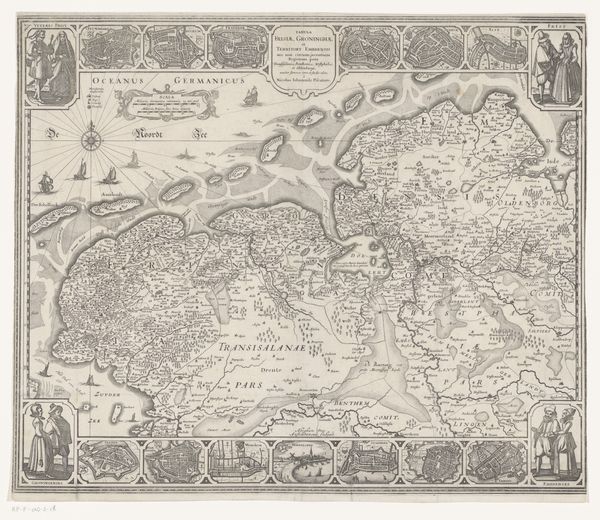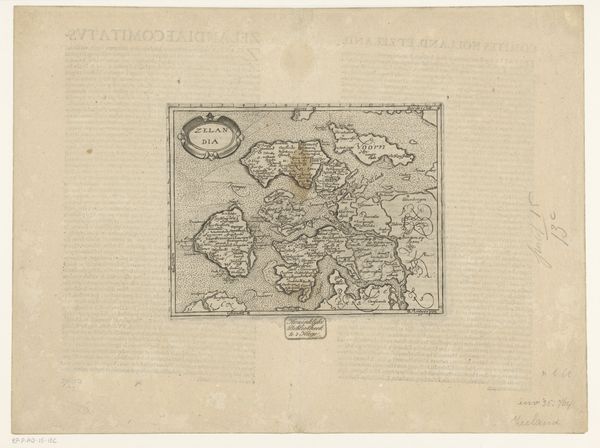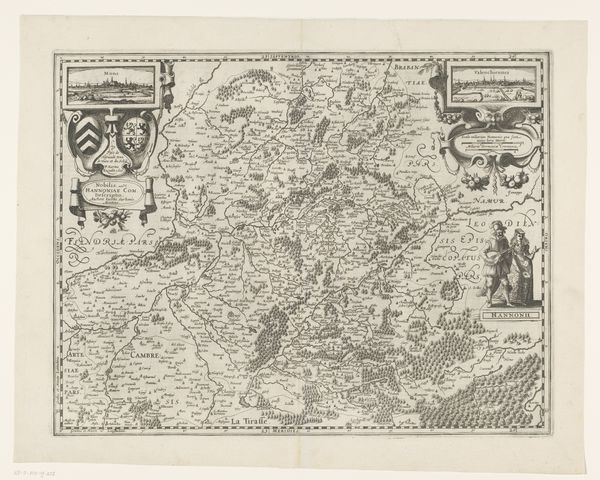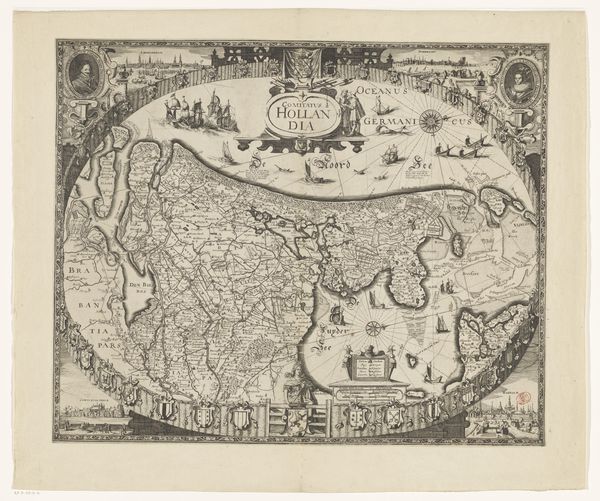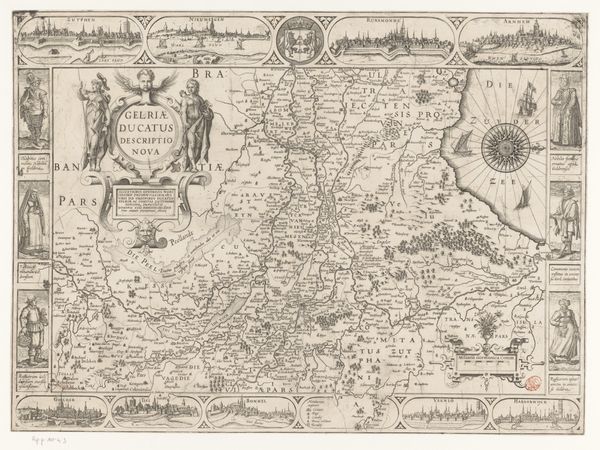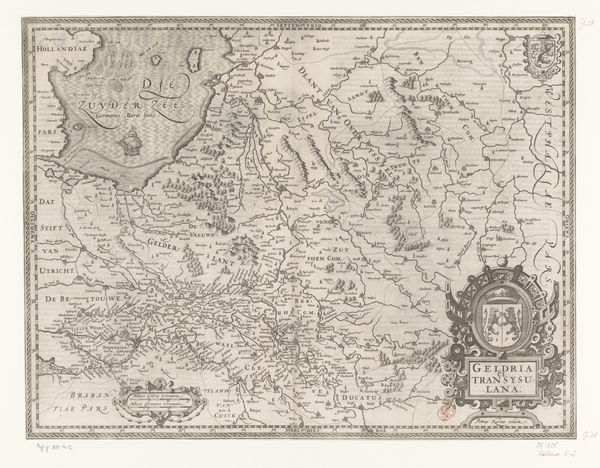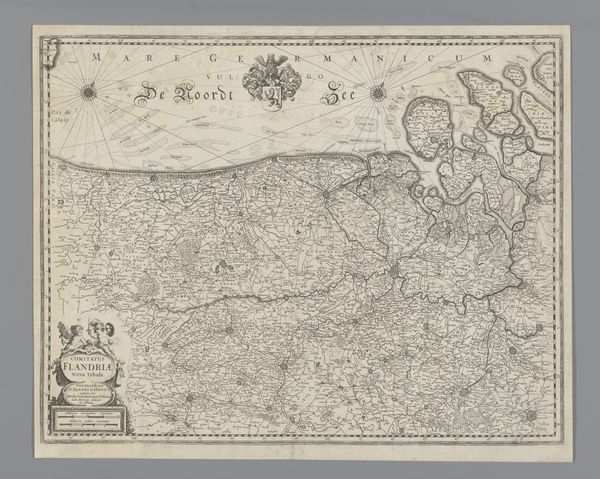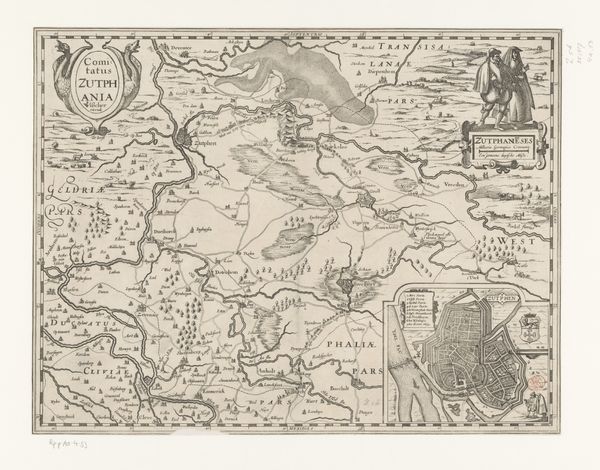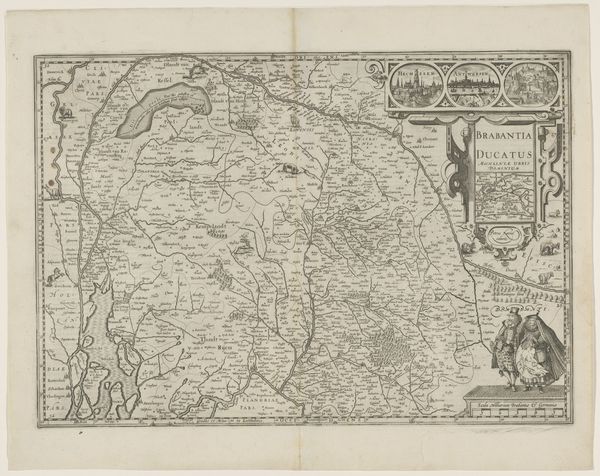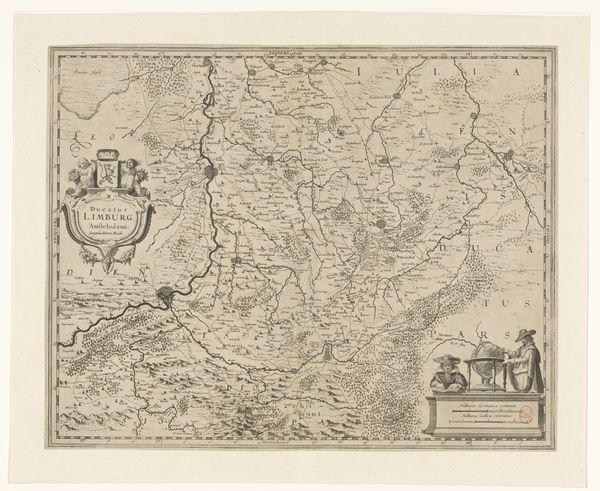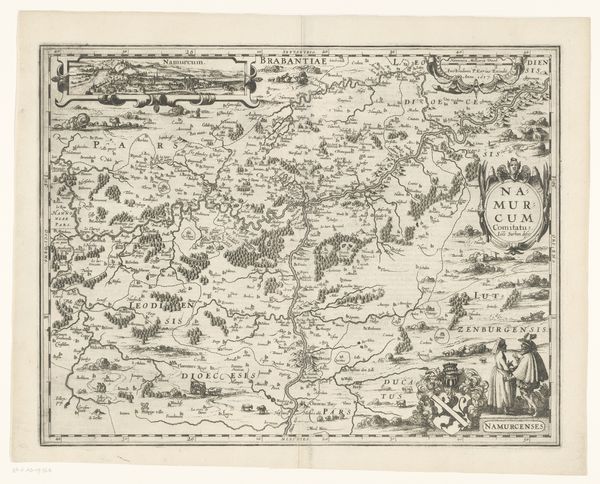
Kaart van Friesland, Groningen, Oost-Friesland en een deel van Drenthe 1617
0:00
0:00
print, paper, ink, engraving
#
pen drawing
# print
#
pen illustration
#
old engraving style
#
landscape
#
paper
#
ink line art
#
ink
#
pen-ink sketch
#
line
#
pen work
#
sketchbook drawing
#
northern-renaissance
#
engraving
Dimensions: height 378 mm, width 492 mm
Copyright: Rijks Museum: Open Domain
Curator: This engraving, made with ink on paper, is Pieter van der Keere’s "Map of Friesland, Groningen, East Friesland and part of Drenthe" from 1617. It's currently held here at the Rijksmuseum. Editor: It strikes me as remarkably detailed, even dense. Look at the intricacy of the coastlines and the sheer number of place names squeezed in. One really appreciates the work and technique involved. Curator: Indeed, these maps were not simply geographic tools. Notice the prominent heraldic symbols and sailing ships decorating the composition; they are symbols loaded with cultural and political meaning for the Dutch Republic. Editor: The paper itself, its size, must have been quite a commodity back then. Each step— from the production of the paper, the preparation of inks, the carving and pressing. Did the intended audience reflect on that material cost, the sheer amount of labour invested? Curator: Possibly! The inclusion of such detailed emblems signals a society deeply invested in self-representation, even in asserting dominion over land and sea. That compass rose in the top right symbolizes not just direction, but a sense of mastery over the unknown world. Editor: True, but what kind of labour went into the drawing itself? One imagines the artist bent over the work, hand cramped from holding the pen. Its value came at the expense of someone’s skilled but tiring job. Curator: Precisely. That tension, between the symbolic power the image conveys and the grounded reality of its making, really opens up interesting questions. Consider how this one image encodes multiple layers of historical narrative. Editor: Thinking about it all now makes you realize that beyond symbols and aesthetics, even simple images embody so many invisible stories of process, value and, labour. Curator: It certainly provides a compelling reminder to read images critically and attentively, not only to observe them, but truly see all the embedded narratives and connections contained within. Editor: Indeed, and this one prompts you to go beyond the visible surface, acknowledging both the artwork and its production. It's almost impossible now to see it simply as a map.
Comments
No comments
Be the first to comment and join the conversation on the ultimate creative platform.
